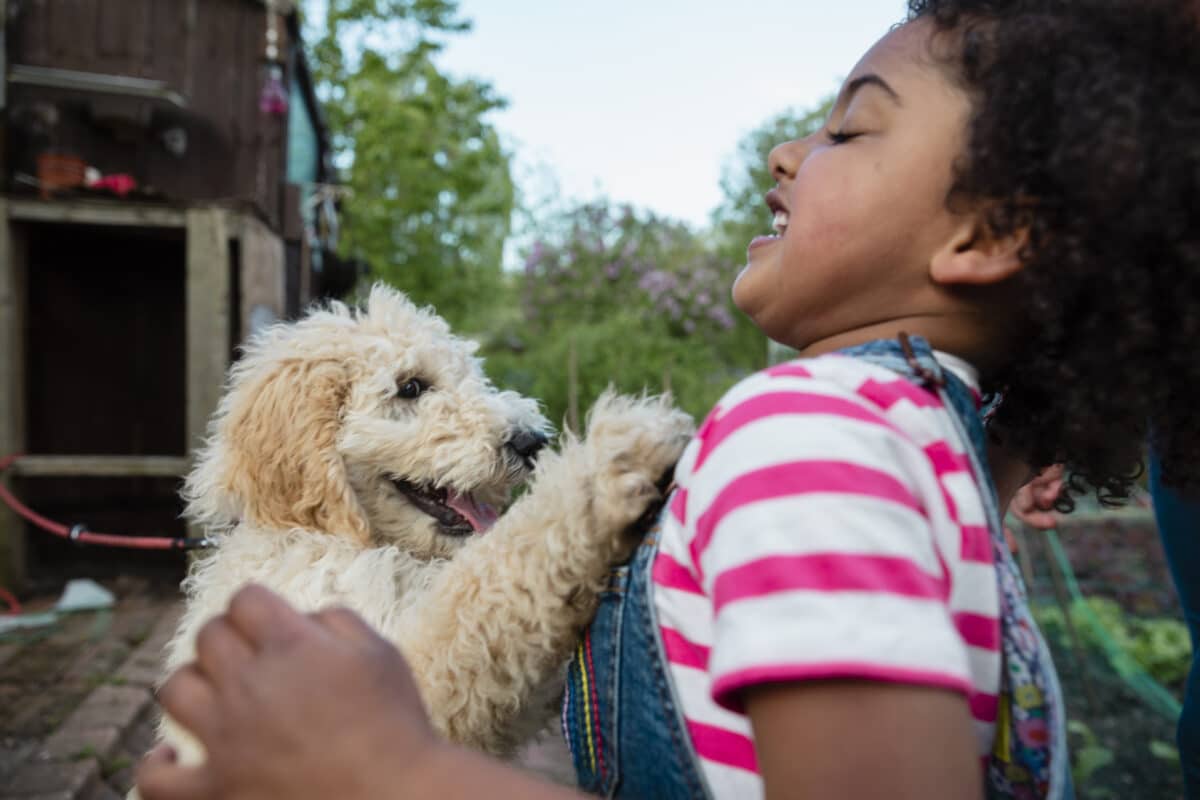behavior modification, clicker training, Differential Reinforcement, How to stop a dog from jumping, negative punishment
How to stop a dog from jumping
How to stop a dog from jumping
By Will Bangura, M.S., CBCC-KA, CPDT-KA, (Dog Behaviorist), Certified Dog Behavior Consultant.
Learning how to stop a dog from jumping is a common challenge for many pet owners. Although dogs may jump for different reasons, such as excitement, attention-seeking, or greeting people, it can become problematic, especially if the dog is too large or energetic. This behavior can be frustrating and even dangerous, especially for children, elderly people, and those with mobility issues. In this article, we will explore why dogs jump and provide step-by-step instructions on how to stop a dog from jumping using positive reinforcement, differential reinforcement, negative punishment, and extinction.
Why do dogs jump? Dogs jump for different reasons, but some common causes include:
- Excitement: Dogs may jump when they are excited about seeing their owners, visitors, or other dogs.
- Attention-seeking: Dogs may jump to get attention from their owners, visitors, or other dogs.
- Greeting: Dogs may jump to greet people or other dogs when they meet them.
- Anxiety or fear: Dogs may jump when they are anxious or afraid of something, such as unfamiliar people or loud noises.
- Playfulness: Dogs may jump as part of their play behavior.
It is important to understand the reasons why a dog jumps to be able to address the behavior effectively.
Positive reinforcement clicker training is a highly effective and humane method of training dogs. This method involves reinforcing desired behaviors with treats, praise, or toys.
Steps how to stop a dog from jumping using positive reinforcement clicker training:
- Start with a clicker and treats. The clicker marks the desired behavior, and the treats are used to reinforce the behavior.
- Wait for the dog to stand still. When the dog stands still, click the clicker and give the dog a treat. This reinforces the behavior of standing still.
- Repeat this process until the dog is standing still more frequently.
- Gradually increase the length of time that the dog must stand still to get a treat.
- Repeat the process with other people, visitors, and dogs to help the dog learn that jumping is unacceptable in any situation.
Differential reinforcement techniques to stop a dog from jumping Differential reinforcement techniques involve reinforcing a behavior that is incompatible with jumping and, for example, reinforcing a dog for sitting instead of jumping.
Steps how to stop a dog from jumping using differential reinforcement techniques:
- Start by teaching the dog the “sit” command. Reinforce the “sit” behavior with treats, praise, or toys.
- When the dog begins to jump, immediately give the “sit” command.
- Reinforce the dog to sit instead of jumping.
- Repeat the process until the dog is sitting instead of jumping more frequently.
- Gradually increase the length of time that the dog must sit before getting a treat or reinforcement.
- Repeat the process with other people, visitors, and dogs to help the dog learn that jumping is unacceptable in any situation.
Negative punishment techniques on how to stop a dog from jumping. Negative punishment techniques involve removing something the dog wants to stop the behavior, such as turning away from the dog when it jumps.
Steps how to stop a dog from jumping using negative punishment techniques:
- Turn away from the dog when it jumps.
- Ignore the dog until it is standing still.
- Reinforce the dog for standing still.
- Repeat the process until the dog is standing still more frequently.
- Gradually increase the length of time that the dog must stand still before getting a treat or reinforcement.
- Repeat the process with other people, visitors, and dogs to help the dog learn that jumping is unacceptable in any situation.
Extinction involves ignoring the behavior until it stops. In other words, the behavior is not reinforced; over time, the behavior decreases and eventually stops.
Steps how to stop a dog from jumping using extinction:
- Ignore the jumping behavior.
- Do not give the dog any attention, treats, or reinforcement when it jumps.
- Wait for the jumping behavior to stop.
- Reinforce the dog for standing still.
- Repeat the process until the dog is standing still more frequently.
- Gradually increase the length of time that the dog must stand still before getting a treat or reinforcement.
- Repeat the process with other people, visitors, and dogs to help the dog learn that jumping is unacceptable in any situation.
In conclusion, learning how to stop a dog from jumping can be challenging, but it is possible with consistent training and patience. By understanding why dogs jump and using positive reinforcement, clicker training, differential reinforcement, negative punishment, and extinction techniques, pet owners can effectively train their dogs not to jump. It is important to remember that every dog is different and may respond better to specific techniques. It may take time to see results, but with patience and consistency, pet owners can teach their dogs to stop jumping and improve their behavior. Sometimes, you may need to consult a professional dog behaviorist or trainer.
References:
- American Kennel Club. (2021). How to Train a Dog Not to Jump. Retrieved from https://www.akc.org/expert-advice/training/how-to-train-a-dog-not-to-jump/
- Humane Society of the United States. (2021). Training Techniques: Positive Reinforcement. Retrieved from https://www.humanesociety.org/resources/training-techniques-positive-reinforcement
- ASPCA. (2021). Differential Reinforcement. Retrieved from https://www.aspca.org/animal-behavior/dog-behavior/differential-reinforcement
- Association of Professional Dog Trainers. (2021). Negative Punishment. Retrieved from https://apdt.com/pet-owners/training-resources/negative-punishment/
- K9 of Mine. (2021). Extinction in Dog Training: What is it and How Does it Work? Retrieved from https://www.k9ofmine.com/extinction-in-dog-training/


